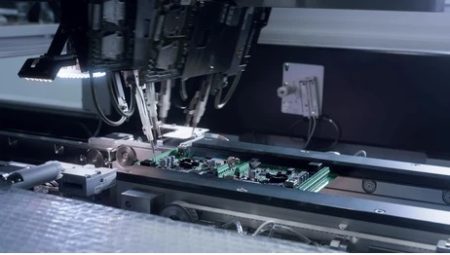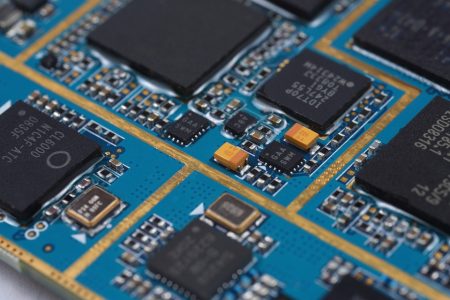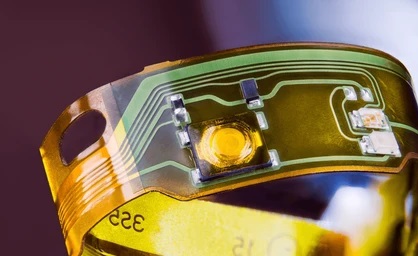- +86-755-23012705
- Building 3, Jinfeng Industrial Park, Fuyong Street, Baoan District, Shenzhen ,China
- [email protected]
As the global push for sustainability intensifies, industries across the board are being encouraged to adopt more environmentally friendly practices. The electronics sector, particularly in the area of Printed Circuit Board Assembly (PCBA) manufacturing, is no exception. The drive to reduce environmental impact has led to increased demand for eco-friendly materials and processes.
However, while the environmental benefits are clear, integrating innovative eco-friendly materials into PCBA manufacturing comes with its own set of challenges, especially when it comes to balancing cost and production efficiency.In this blog post, we’ll explore how manufacturers can strike the right balance between environmental responsibility and cost-effectiveness, focusing on the adoption of eco-friendly materials and their integration into PCBA processes.
Eco-friendly materials, in the context of PCBA manufacturing, refer to substances and components that are less harmful to the environment throughout their lifecycle, from production to disposal. This includes materials like lead-free solders, non-toxic adhesives, and sustainable packaging options. The increasing demand for these materials is largely driven by environmental regulations such as the RoHS (Restriction of Hazardous Substances) directive in Europe and similar standards around the world. These regulations limit or ban the use of hazardous substances like lead, mercury, and cadmium in electronic products.
Beyond regulatory pressure, there is also rising consumer awareness about the environmental impact of electronic waste (e-waste). As consumers become more eco-conscious, companies are under pressure to develop and produce electronics that are not only functional but also environmentally friendly. This has led to a significant shift toward using eco-friendly materials in the production of PCBA assemblies, which typically involve soldering, surface mounting, and component integration.

While the shift to eco-friendly materials brings numerous environmental benefits, one of the main challenges for PCBA manufacturers is the cost associated with these materials. Many eco-friendly alternatives, especially lead-free solders, are often more expensive than their traditional counterparts. The raw materials used in eco-friendly soldering, like tin, silver, and copper, are typically more costly than the lead-based solders previously used in PCBA manufacturing.
In addition to raw material costs, the adoption of eco-friendly materials often requires modifications to existing manufacturing processes. For example, lead-free solder requires higher processing temperatures during soldering, which may necessitate the use of more energy-intensive equipment or modifications to the existing production line. This can result in increased operational costs, both in terms of energy consumption and labor.
Moreover, switching to eco-friendly materials can involve higher upfront investments in testing, certification, and process optimization. Manufacturers may need to invest in additional research and development (R&D) to identify the most cost-effective eco-friendly materials that perform reliably during the manufacturing process.
Integrating eco-friendly materials into PCBA manufacturing processes doesn’t only involve sourcing different materials. Manufacturers must also adapt their production methods to ensure the materials perform optimally without compromising product quality or increasing production costs unnecessarily.
Soldering Process Modifications: Lead-free solders, for instance, require higher temperatures to melt compared to traditional lead-based solders. Manufacturers must adjust their soldering ovens, reflow profiles, and component handling techniques to accommodate the higher melting points of lead-free solders. These adjustments can lead to increased energy usage and longer cycle times, driving up costs.
Surface Finish Changes: Many eco-friendly PCBs now use alternative surface finishes like ENIG (Electroless Nickel Immersion Gold) or HASL (Hot Air Solder Leveling) to replace lead-containing finishes. However, these processes often require specialized equipment, which can increase capital expenditures and operational costs.
Adoption of New Materials: Using new materials like biodegradable plastics or non-toxic adhesives may require additional research and testing to ensure that they meet performance and durability standards. Ensuring that these materials maintain the reliability and longevity of PCBs while remaining cost-effective can be a significant challenge.

Despite the initial higher costs associated with eco-friendly materials and modified processes, there are several strategies PCBA manufacturers can adopt to strike a balance between environmental responsibility and cost efficiency:
Supply Chain Optimization: Manufacturers can work closely with suppliers to source eco-friendly materials at competitive prices. Bulk purchasing and long-term contracts can help reduce material costs over time. Collaborating with suppliers who specialize in sustainable materials can also lead to innovations that lower costs without compromising environmental goals.
Process Optimization: Manufacturers can look for ways to optimize their processes to reduce the additional costs associated with eco-friendly materials. For example, improving the efficiency of soldering techniques, streamlining production schedules, and investing in energy-efficient machinery can help offset some of the additional costs. Lean manufacturing principles can also help reduce waste and improve overall production efficiency.
Government Incentives and Certifications: Many governments offer financial incentives, grants, or tax breaks to companies that adopt green manufacturing practices. In addition, obtaining certifications like ISO 14001 (Environmental Management) can help manufacturers access new markets and enhance their reputation with environmentally conscious consumers. These incentives can help offset some of the initial costs of transitioning to eco-friendly materials and processes.
Long-term Return on Investment (ROI): While the upfront costs of eco-friendly materials may be higher, over the long term, companies can see financial benefits through reduced energy consumption, lower waste disposal costs, and greater market demand for environmentally friendly products. Moreover, as environmental regulations become stricter, staying ahead of compliance requirements can reduce the risk of fines and penalties, making the initial investment worthwhile.
Looking ahead, the key to balancing the cost of eco-friendly materials with PCBA manufacturing processes lies in innovation. Advances in material science, process automation, and energy-efficient technologies are opening new possibilities for manufacturers. For instance, the development of low-temperature soldering techniques could help mitigate the energy consumption and cost implications of lead-free solders. Furthermore, additive manufacturing (3D printing) could allow for more sustainable and cost-efficient production of PCBs, reducing waste and the need for traditional materials.
By continuously innovating and adopting sustainable practices, PCBA manufacturers can lower the cost of eco-friendly materials and processes over time, creating a more sustainable and cost-effective future for the industry.

The shift toward eco-friendly materials in PCBA manufacturing presents both opportunities and challenges. While the costs associated with these materials and processes may initially seem high, there are numerous strategies that manufacturers can employ to balance environmental goals with cost efficiency.
Through process optimization, supply chain management, and leveraging government incentives, companies can reduce the financial burden while staying ahead of regulatory requirements and meeting consumer demand for sustainable products. As the industry continues to evolve, innovation will be key in driving down costs and enabling manufacturers to create environmentally responsible yet economically viable products.
Take Your Projects to New Heights with XPCB Limited
XPCB Limited offers top-notch PCB manufacturing, quick-turnaround prototyping, and turnkey PCBA services designed to make your projects shine. Count on us to bring your ideas to life with efficiency and quality. Your success matters to us, and we’re here to make your innovation journey smooth and rewarding.






XPCB Limited is a premium PCB & PCBA manufacturer based in China.
We specialize in multilayer flexible circuits, rigid-flex PCB, HDI PCB, and Rogers PCB.
Quick-turn PCB prototyping is our specialty. Demanding project is our advantage.
Tel : +86-136-3163-3671
Fax : +86-755-2301 2705
Email : [email protected]
© 2024 - XPCB Limited All Right Reserve
